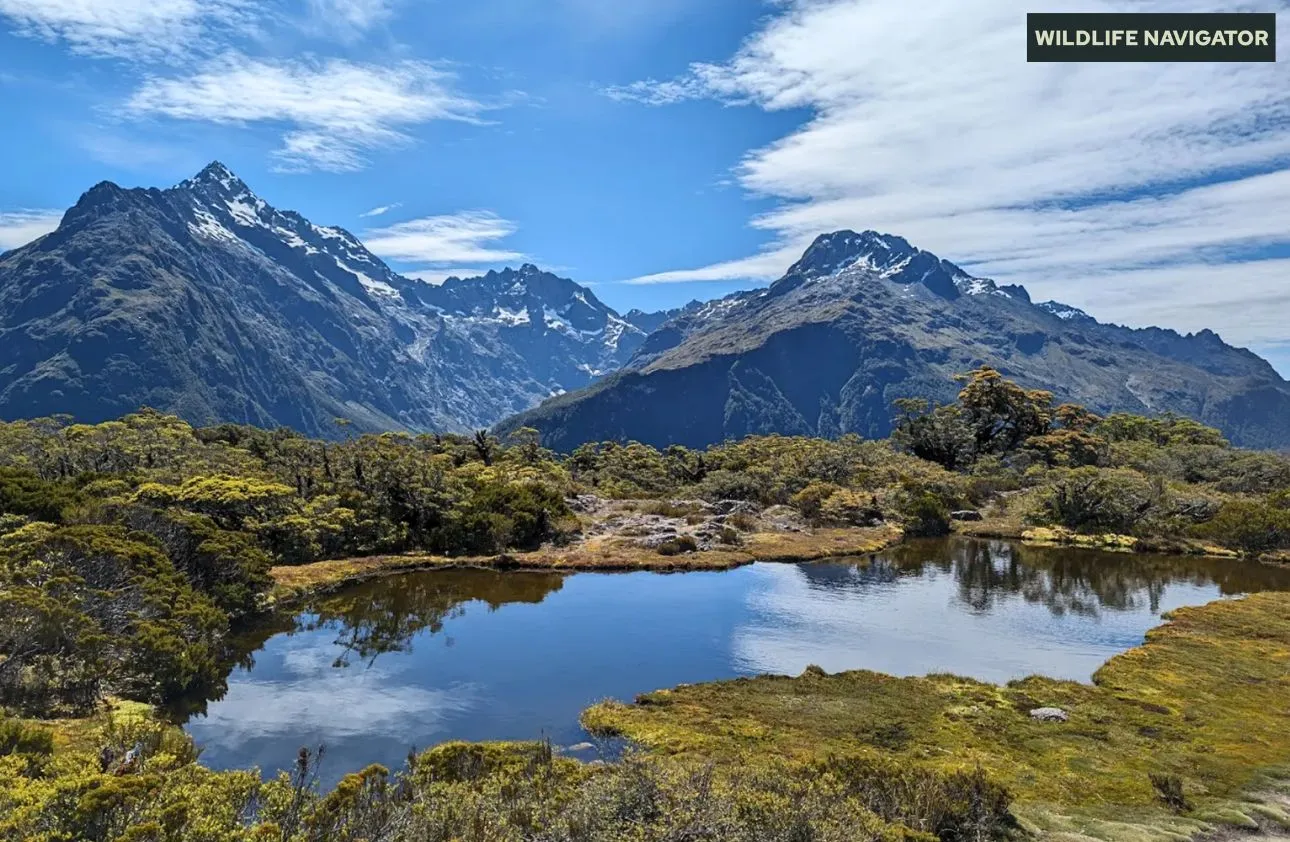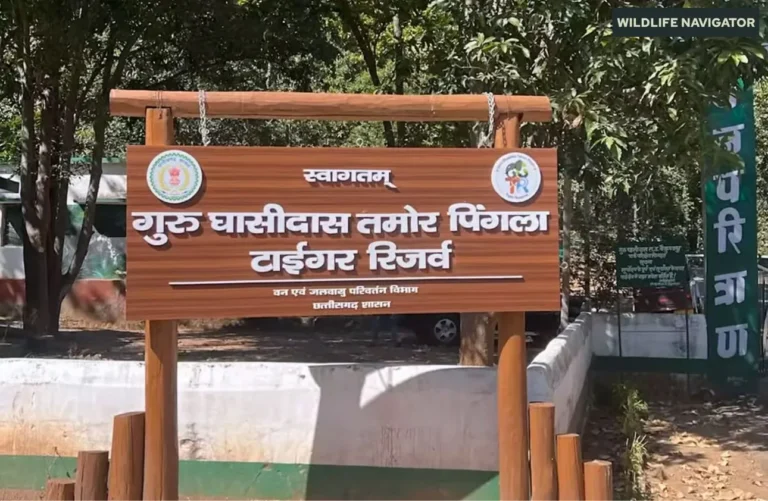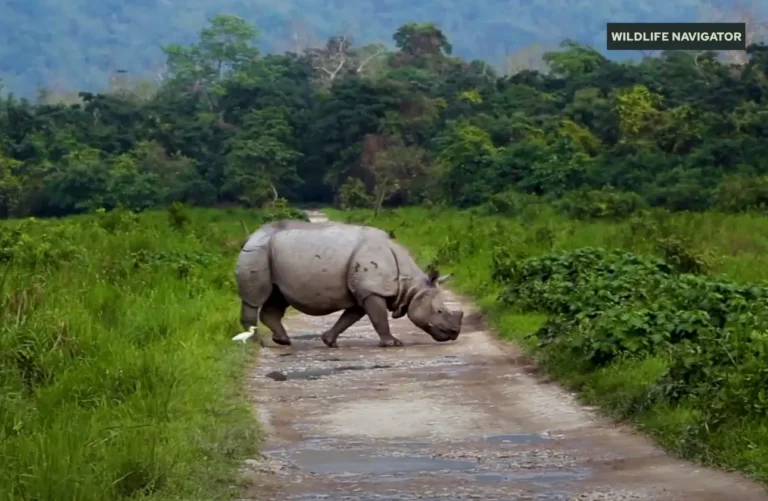Fiordland National Park Travel Guide: Milford Sound, Hiking Trails & Best Things to Do

Fiordland National Park is one of the world’s last great wilderness areas—an untouched realm of towering fjords, ancient rainforests, snow-draped mountains, and deep glacial lakes. Located on the remote southwest corner of New Zealand’s South Island, it spans over 12,500 sq. km, making it the largest national park in the country and one of the most dramatic landscapes on Earth.
This pristine sanctuary forms a major part of the Te Wāhipounamu UNESCO World Heritage Site, celebrated for its exceptional natural beauty and geological significance. Carved by massive glaciers over millions of years, Fiordland’s iconic fjords—like Milford Sound, Doubtful Sound, and Dusky Sound—stand as awe-inspiring reminders of its ancient past. Waterfalls plunge from sheer cliffs, mist drifts through dense temperate rainforests, and wildlife thrives in secluded valleys where nature remains largely undisturbed.
For travellers, Fiordland is a sensory experience: the roar of cascading waterfalls after rain, the sight of rare birds darting through moss-covered beech forests, and the thrill of cruising beneath the dramatic silhouette of Mitre Peak. It’s a paradise for hikers, photographers, birdwatchers, and anyone seeking a deep connection with raw, unfiltered wilderness.
Whether you come for the world-famous Milford Track, the enchanting glowworm caves of Te Anau, or the chance to spot the elusive Fiordland kiwi, this park offers an adventure like no other. Fiordland isn’t just a destination—it’s a reminder of how wild and magnificent our planet can be.
Geography & Landscape
Fiordland National Park is defined by landscapes so dramatic they feel almost otherworldly. Sculpted by ancient glaciers and shaped by millions of years of geological evolution, the region is a masterpiece of steep cliffs, deep valleys, lush rainforests, and majestic fjords. Its scale is immense, its terrain rugged, and its beauty unforgettable.
Formation of the Fjords
Fiordland’s iconic fjords were formed during the last Ice Age, when massive glaciers carved deep U-shaped valleys into the granite mountains. As the glaciers retreated, the valleys flooded with seawater, creating the awe-inspiring fjords we see today. These fjords are among the deepest in the world, with sheer rock faces rising hundreds of meters from dark, still waters.
Iconic Landscapes
Fiordland is home to some of the most celebrated natural landmarks in New Zealand:
- Milford Sound – The crown jewel of the park, known for its towering cliffs, Mitre Peak, and thousands of temporary waterfalls that appear during rain.
- Doubtful Sound – Larger, deeper, and quieter than Milford Sound, often called the “Sound of Silence” for its peaceful, untouched atmosphere.
- Dusky Sound – One of the most remote and wild fjords, known for its complex network of islands, coves, and wildlife-rich waters.
Mountains & Glacial Valleys
The landscape is dominated by the Southern Alps, featuring rugged peaks that rise sharply from the coastline. Many valleys in Fiordland still showcase classic glacial formations: steep sides, flat floors, and dramatic cirques at their heads. These geological features make the region a paradise for trekkers and photographers.
Rivers, Waterfalls & Lakes
Fiordland experiences some of the highest rainfall in the world, feeding an incredible network of rivers, cascades, and waterfalls:
- Sutherland Falls – One of the tallest waterfalls in New Zealand, plunging 580 meters in three dramatic leaps.
- Lake Te Anau – New Zealand’s second-largest lake, forming the gateway to many iconic hikes.
- Lake Manapouri – A stunning, island-studded lake known for its crystal-clear waters and spectacular sunsets.
From the shimmering lakes to the thunderous waterfalls, Fiordland’s landscapes are constantly shifting with the weather—creating a different, mesmerising experience every time you visit.
Climate & Best Time to Visit
Fiordland National Park is known for its dramatic and unpredictable climate—an essential part of what makes the park so lush, alive, and visually stunning. With some areas receiving over 7,000 mm of rainfall annually, Fiordland is one of the wettest places on Earth. The frequent rains feed its countless waterfalls, nourish its ancient rainforests, and maintain the misty, mystical atmosphere that defines the region.
Weather Patterns in Fiordland
The park experiences a temperate maritime climate influenced by westerly winds that carry moisture from the Tasman Sea. When these winds hit the towering Southern Alps, clouds unload heavy rainfall across the region. This results in:
- Sudden weather changes
- Frequent showers
- High humidity
- Cool temperatures year-round
Even on sunny days, clouds can sweep in quickly, creating dramatic light and shadow across the fjords.
Rainfall & Its Impact on the Landscape
Rainfall is not just common—it is central to Fiordland’s identity. After heavy rain, thousands of temporary waterfalls spill down the cliffs of Milford and Doubtful Sound, creating a breathtaking spectacle. The forests become greener, lakes rise, and wildlife becomes more active.
Travellers should always expect at least some rain during their visit.
Best Seasons to Visit
Fiordland is a year-round destination, but each season offers a unique experience:
Summer (December–February)
- Best weather and long daylight hours
- Ideal for hiking the Great Walks
- Peak tourist season
Autumn (March–May)
- More stable weather than spring
- Fewer crowds
- Beautiful, crisp mornings
Winter (June–August)
- Snow-capped peaks and serene landscapes
- Cooler temperatures and occasional road closures
- Perfect for photography and peaceful travel
Spring (September–November)
- Waterfalls at their fullest
- Lush forests and active wildlife
- Weather can be unpredictable
Avoiding Crowds
Milford Sound and popular trails can get busy during summer. To enjoy quieter experiences:
- Visit early morning or late afternoon
- Travel in autumn or spring
- Explore less-visited fjords like Dusky or Breaksea Sound
Fiordland’s weather may be wild, but it’s part of the charm—each shift in clouds, rain, or sunlight reveals a new face of this magnificent landscape.
Wildlife of Fiordland National Park
Fiordland is one of New Zealand’s last strongholds for rare and endangered species. Its remote terrain, thick rainforests, and rugged mountains create safe habitats that have allowed many endemic birds and marine mammals to survive—even as populations elsewhere declined. For wildlife lovers, Fiordland is a living sanctuary where you can encounter species found nowhere else on Earth.
A Refuge for Rare & Endemic Species
Because of its isolation and limited human interference, Fiordland protects some of New Zealand’s most threatened wildlife. From flightless birds hiding deep in the undergrowth to marine mammals cruising through silent fjords, the park is a biodiversity hotspot. Conservation efforts by the Department of Conservation (DOC) have played a major role in restoring native populations, especially in predator-controlled areas.
Key Bird Species of Fiordland
Fiordland is internationally famous for its birdlife. Some species here are extremely rare and culturally iconic.
- Takahe: Once believed extinct for nearly 50 years, the flightless takahe was rediscovered in Fiordland in 1948. Today, the Murchison Mountains remain its primary wild habitat.
- Fiordland Tokoeka (Kiwi): A unique kiwi species found primarily in Fiordland. Mostly nocturnal, but occasional daytime sightings occur in remote areas.
- Kea: The world’s only alpine parrot—intelligent, curious, and often mischievous. Commonly spotted around mountain passes and hiking trails.
- Kaka: A large forest parrot known for its loud calls and striking reddish-brown plumage.
- Fiordland Crested Penguin (Tawaki): One of the rarest penguins on Earth. Found along rugged southwestern coastlines and fjord edges, often seen bobbing near the shore or nesting in dense bush.
Mammals (Marine & Terrestrial)
While New Zealand has very few native land mammals, its waters are rich in marine life.
- New Zealand Fur Seals: Often seen basking on rocks along Milford and Doubtful Sound; agile swimmers and playful in the water.
- Bottlenose Dolphins: Resident pods inhabit Doubtful Sound, known for their friendly behaviour and frequent interactions with boats.
- Fiordland Crested Penguin: Listed above under birds, but often observed from boats as they swim and feed.
- Introduced Mammals (Ecological Challenge): Deer, possums, and stoats are not native. They pose threats to native birds and forests and are actively controlled by DOC.
Reptiles, Amphibians & Other Species
- Native Lizards: While not as visible as birds, Fiordland shelters several species of skinks and geckos in rocky and alpine zones.
- Native Frogs (Rare Species Nearby): New Zealand’s ancient frog species—like Archey’s and Hochstetter’s frogs—are not widespread in Fiordland itself but are part of the broader southern biodiversity story and often included in regional ecology discussions.
- Invertebrates: Fiordland’s dense rainforests host fascinating species such as giant wetas, glowworms (near Te Anau caves), freshwater insects, and rare alpine invertebrates.
Overall, Fiordland is a wildlife sanctuary in the truest sense—a place where rare species are given space to survive and thrive in landscapes untouched by time. The diversity here is extraordinary and offers endless opportunities for wildlife observation.
Flora: Forests & Unique Plant Life
Fiordland National Park is a botanical treasure trove—home to some of the oldest, densest, and most pristine temperate rainforests on the planet. The region’s isolation, high rainfall, and rugged terrain have allowed ancient plant communities to flourish much as they did thousands of years ago. These forests create the lush green backdrop that defines Fiordland’s dramatic fjords and valleys.
Ancient Temperate Rainforests
Much of Fiordland is cloaked in cool, moist temperate rainforest, where moss-draped trees, ferns, and damp undergrowth create an enchanting, almost prehistoric atmosphere. The forests are incredibly dense, with plants competing for sunlight under a canopy that stays green year-round.
Dominant Tree Species
Fiordland’s forests are dominated by southern beech trees, but the diversity goes far deeper. Common species include:
- Beech Forests (Nothofagus)
- Red beech
- Silver beech
- Mountain beech
These hardy trees thrive across valleys, slopes, and mountain foothills and form the backbone of Fiordland’s forest ecosystem.
- Podocarps (Ancient Conifers)
- Rimu – tall, elegant trees with drooping foliage
- Kahikatea – New Zealand’s tallest tree species
- Totara – long-lived and culturally significant
These conifers often grow in lowland and mixed forests, adding to the region’s botanical richness.
Alpine & Subalpine Vegetation
At higher elevations where forests thin out, a different plant world emerges:
- Snow tussocks
- Alpine herbs and daisies
- Small shrubs and cushion plants
- Moss fields on windswept ridges
These plants are specially adapted to cold temperatures, high winds, and rocky terrain. During summer, alpine zones burst into bloom, adding splashes of colour to the landscape.
Mosses, Lichens & Ground Cover
One of the most striking features of Fiordland is how everything seems coated in life:
- Thick carpets of moss
- Tree trunks draped with hanging lichens
- Moist fern-filled valleys
- Rich layers of leaf litter support fungi and tiny invertebrates
This intense green layer absorbs rainfall like a sponge, helping maintain the region’s constant humidity and feeding streams and waterfalls.
Wetlands, Valleys & Coastal Vegetation
Fiordland also includes wetlands and coastal ecosystems:
- Flax and manuka shrubs around open wetlands
- Raupo and sedges near lakes and river margins
- Coastal shrubs clinging to cliffs near fjord entrances
These ecosystems provide shelter and food for many birds, including ducks, herons, and the rare Fiordland crested penguin.
Fiordland’s flora is an essential part of the park’s identity—creating the lush, emerald landscapes that travellers remember long after they leave. The forests here are living time capsules, giving visitors a glimpse into the ancient botanical history of New Zealand.
Major Attractions & Must-Visit Spots
Fiordland National Park is overflowing with natural wonders—iconic fjords, shimmering lakes, underground caves, and towering peaks. Whether you’re exploring by boat, on foot, or from the air, every corner of Fiordland offers a new scene of breathtaking beauty. These are the must-visit attractions that define the region.
Milford Sound
Often labelled the “Eighth Wonder of the World,” Milford Sound is the most famous destination in Fiordland. Its sharp, vertical cliffs rise dramatically from black waters, while waterfalls like Stirling and Bowen Falls cascade down hundreds of meters. The fjord is spectacular in any weather—sunlight creates mirror-like reflections, while rain brings thousands of temporary waterfalls.
Key highlights:
- Boat cruises (classic or nature cruise)
- Kayaking beneath Mitre Peak
- Mitre Peak Lookout Walk
- Underwater Observatory at Harrison Cove
Doubtful Sound
Larger, deeper, and far more secluded than Milford Sound, Doubtful Sound offers an atmosphere of pure silence and untouched wilderness. Accessible only by boat across Lake Manapouri and then by bus over Wilmot Pass, it rewards visitors with immense serenity.
Key highlights:
- Multi-hour cruises
- Resident bottlenose dolphin pods
- Rare Fiordland crested penguin sightings
- Overnight cruises for deeper exploration
Dusky Sound
One of the most remote fjords, Dusky Sound, is a treasure for wildlife lovers and expedition-style travellers. Its maze of islands, coves, and channels makes it ideal for marine wildlife spotting and photography.
Key highlights:
- Remote boat tours
- Fur seal colonies
- Pristine, untouched landscapes
Mitre Peak
The iconic Mitre Peak rises more than a kilometre straight from the water, forming the signature silhouette of Milford Sound. It is one of the most photographed landmarks in New Zealand. While the climb is extremely technical and not open to casual visitors, the views from shore and cruises are unforgettable.
Te Anau Glowworm Caves
Located near the town of Te Anau, these caves offer a magical underground experience. Visitors can walk through twisting limestone passages, observe roaring underground waterfalls, and take a silent boat ride into a grotto illuminated by thousands of glowworms.
A perfect soft-adventure activity for families and photographers.
Sutherland Falls
Cascading an incredible 580 meters in three drops, Sutherland Falls is one of New Zealand’s tallest and most dramatic waterfalls. It is accessible via the Milford Track or scenic flights that pass near the falls.
Lakes Te Anau & Manapouri
Lake Te Anau (NZ’s second largest) and Lake Manapouri (famous for its island-studded beauty) serve as gateways to many Fiordland adventures. Their calm waters are perfect for boating, fishing, or simply relaxing with mountain views.
These attractions showcase the essence of Fiordland—raw, powerful, and breathtaking at every turn. Whether you explore one fjord or venture deep into remote corners of the park, the experience will stay with you forever.
Best Things To Do
- Cruise the Fjords: Boat cruises in Milford and Doubtful Sound offer the best views of towering cliffs, waterfalls, dolphins, and fur seals.
- Wildlife Watching: Spot rare birds like the Fiordland tokoeka (kiwi), takahe, kea, and the Fiordland crested penguin, along with marine mammals.
- Hiking & Walking: Fiordland is a hiker’s paradise—choose from Great Walks like the Milford, Kepler, or Routeburn Tracks, or short scenic trails.
- Kayaking: Paddle through calm fjord waters for close-up views of cliffs, waterfalls, and marine life.
- Scenic Flights: Take a helicopter or small-plane flight to see glacier-carved valleys, waterfalls, and remote fjords from above.
- Camping & Photography: Camp in designated areas near lakes and valleys, and capture Fiordland’s dramatic landscapes in every season.
Hiking & Famous Trails
Fiordland is one of the world’s premier hiking destinations, home to three of New Zealand’s Great Walks and dozens of short tracks. Whether you are looking for a multi-day adventure or a quick scenic walk, the park offers trails through fjords, forests, alpine ridges, and glacial valleys.
Great Walks (Multi-Day Hikes with Itineraries)
Milford Track (4 Days / 53 km)
Often called “the finest walk in the world,” the Milford Track leads you through lush beech forests, powerful waterfalls, alpine passes, and ends at the dramatic Milford Sound.
Suggested Itinerary:
Day 1: Te Anau → Glade Wharf → Clinton Hut (5 km)
Easy forest walk along the Clinton River.
Day 2: Clinton Hut → Mintaro Hut (16.5 km)
Gradual climb through valleys surrounded by towering peaks.
Day 3: Mintaro Hut → Mackinnon Pass → Dumpling Hut (14 km)
The highlight: panoramic views from Mackinnon Pass; visit Sutherland Falls.
Day 4: Dumpling Hut → Sandfly Point → Milford Sound (18 km)
Walk through lush rainforest; catch a boat to Milford Sound Wharf.
Kepler Track (3–4 Days / 60 km)
A circular alpine track that offers some of the best ridge-line views in Fiordland. Designed for smooth walking and stunning panoramas.
Suggested Itinerary:
Day 1: Te Anau → Luxmore Hut (13.8 km)
Steady climb through forest to open alpine terrain.
Day 2: Luxmore Hut → Iris Burn Hut (14.6 km)
Walk across alpine ridges with breathtaking views of lakes and mountains.
Day 3: Iris Burn Hut → Moturau Hut (16.2 km)
Descend through valley forests; relax beside Lake Manapouri.
Day 4: Moturau Hut → Te Anau Control Gates (15.5 km)
Easy final stretch along wetlands and riverbanks.
Routeburn Track (2–3 Days / 32 km)
A high-altitude journey linking Fiordland and Mount Aspiring National Park. Known for alpine lakes, waterfalls, and dramatic valley views.
Suggested Itinerary:
Day 1: Routeburn Shelter → Routeburn Falls Hut (8.8 km)
A scenic climb alongside river gorges and waterfalls.
Day 2: Routeburn Falls Hut → Lake Mackenzie Hut (11.3 km)
Walk the legendary Harris Saddle with spectacular mountain vistas.
Day 3: Lake Mackenzie Hut → The Divide (12 km)
Descend through rainforest, passing Earland Falls and panoramic viewpoints.
Short & Scenic Day Walks
- Lake Marian Track (3 hours return): A steep forest walk leading to a beautiful alpine lake surrounded by glacier-carved peaks.
- Key Summit Track (3 hours): Part of the Routeburn Track; offers panoramic views of mountains and valleys from a high alpine boardwalk.
- Mirror Lakes Walk (10 minutes): A simple roadside stop with perfect reflections of the Earl Mountains on calm days.
- Humboldt Falls Track (30 minutes): Short walk to one of Fiordland’s tallest waterfalls.
These trails capture the true essence of Fiordland—rugged, remote, and visually stunning. Whether you choose a world-famous multi-day trek or a short alpine walk, each step brings you deeper into New Zealand’s wild heart.
How to Reach
Fiordland may feel remote, but it is surprisingly accessible through New Zealand’s well-connected road network and nearby towns. Most travellers use Te Anau as their base, while some visit directly from Queenstown for day trips to Milford Sound.
- By Air:
- The nearest major airport is Queenstown Airport, about 2 hours from Te Anau.
- Domestic flights connect Queenstown to Auckland, Wellington, and Christchurch.
- From Queenstown, visitors continue by road to Te Anau or book direct tours to Milford Sound.
- By Road: Fiordland is primarily accessed via well-maintained highways.
- Queenstown → Te Anau
- Distance: 170 km
- Time: 2 hours
A scenic drive along lakes and mountains.
- Te Anau → Milford Sound
- Distance: 118 km
- Time: 1 hour 45 minutes. One of New Zealand’s most spectacular drives—through alpine passes, valleys, and the iconic Homer Tunnel.
- Te Anau → Manapouri (for Doubtful Sound)
- Distance: 21 km
- Time: 20 minutes
- Queenstown → Te Anau
Travel Tips
- Drive cautiously—weather can cause fog, rain, or icy patches.
- Fuel up in Te Anau (no gas stations in Milford Sound).
- Always check road conditions for the Homer Tunnel area.
- Allow extra time for photo stops—the scenery is irresistible.
Accommodation & Staying Options
Fiordland offers a wide range of places to stay—from lakeside towns with full amenities to rustic huts deep in the wilderness. Your choice depends on the type of experience you want: comfort, convenience, or total immersion in nature.
Where to Stay
Te Anau (Best Base for Fiordland)
Te Anau is the primary gateway town for exploring Fiordland National Park. It’s close to major attractions and offers plenty of facilities.
Types of stays:
- Hotels & resorts
- Motels
- Holiday parks
- Lakeside lodges
- Backpacker hostels
Best for:
- Easy access to Milford & Doubtful Sound
- Stocking up on supplies
- Dining and transport options
Manapouri
A quieter alternative to Te Anau, located on the shores of Lake Manapouri. Ideal for Doubtful Sound excursions.
Types of stays:
- Small lodges
- Boutique cottages
- Bed-and-breakfasts
Best for:
- Peaceful lake views
- Access to Doubtful Sound cruises
Milford Sound
The most dramatic location, but with extremely limited accommodation.
Options:
- Milford Sound Lodge – the only accommodation in Milford Sound offering chalets and campervan sites.
- Overnight boat cruises – stay on board in the fjord.
Best for:
- Immersive fjord experience
- Early morning views without crowds
Great Walk Huts (For Multi-Day Hikes)
If you’re hiking the Milford, Kepler, or Routeburn Tracks, you’ll stay in DOC-managed huts.
Facilities typically include:
- Bunk beds
- Communal kitchens
- Toilets
- Water supply
- Heating (varies by hut)
Note: You must book huts months in advance during Great Walk season.
Camping in Fiordland
- DOC Campsites: Multiple campsites are located around Te Anau, Manapouri, and Milford Road. These offer basic amenities and scenic surroundings.
- Holiday Parks: For powered sites, showers, Wi-Fi, and laundry—stay in Te Anau or Manapouri holiday parks
- Backcountry Camping: Allowed only in certain areas and requires good experience. Always follow Leave No Trace rules.
Whether you prefer a cosy lakeside lodge or a night under the stars in the wilderness, Fiordland provides options for every style of travel.
Travel Tips & Visitor Information
Getting There
- Te Anau is the main gateway to Fiordland—most tours, treks, and transport options start here.
- Milford Sound is a 1 hour 45 min drive from Te Anau, or 4 hours from Queenstown.
- Doubtful Sound requires a boat across Lake Manapōuri + bus + cruise.
Park Entry & Fees
- Fiordland National Park itself has no entry fee.
- Charges apply for cruises, guided tours, Great Walk huts, campsites, and transport.
What to Pack
- Waterproof jacket, warm layers
- Sturdy hiking shoes
- Offline maps (signal is limited)
- Insect repellent (sandflies are common!)
- Camera & binoculars
Safety Tips
- Weather changes suddenly—check forecasts before starting any hike.
- Roads can be icy or foggy; drive slowly, especially the Milford Road.
- Always carry enough food, water, and emergency essentials when trekking.
- Many areas have no mobile coverage, so don’t rely on your phone for navigation.
Guided vs. Self-Guided
- Guided tours are ideal for first-time visitors, kayakers, or multi-day hikes.
- Self-guided is great for confident hikers with good navigation and gear.
Environmental Etiquette
- Follow Leave No Trace principles.
- Stay on marked trails.
- Do not feed wildlife.
- Carry back all waste.
Conclusion
Fiordland National Park is one of the world’s last great wilderness areas—a place where dramatic fjords, ancient rainforests, glacier-carved valleys, and rare wildlife come together to create unmatched natural beauty. Whether you’re cruising through Milford Sound, trekking along the world-famous Great Walks, or simply soaking in the stillness of untouched landscapes, Fiordland offers a once-in-a-lifetime experience for every nature lover.
It’s wild, unpredictable weather only adds to its mystique, reminding visitors that this vast land remains ruled by nature. From majestic waterfalls to kiwi-filled forests, Fiordland is a destination you don’t just visit—you feel it, breathe it, and carry it with you long after you leave.





